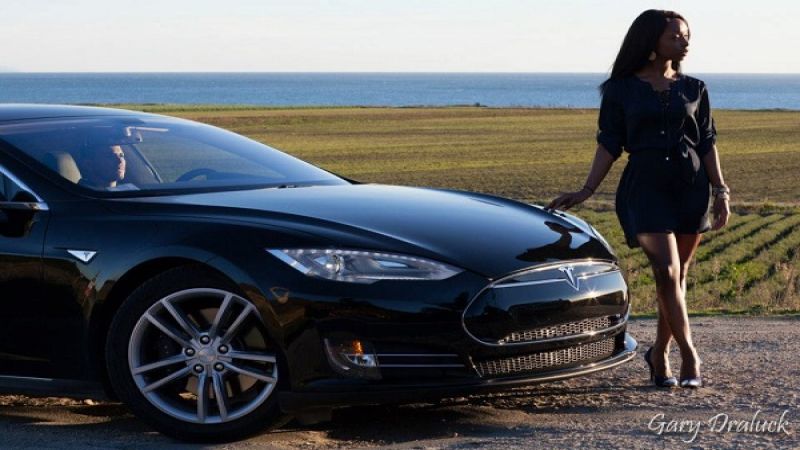Cars.com has done a study and identified an interesting reason that electric vehicles are having trouble gaining ground. Although Cars.com found the top 10 electric vehicles' (EV) sales have grown 21.8% this year to date versus 2013 YTD at this same time, they say the charging infrastructure necessary for this growth rate to explode has not been built. At a glance, we assumed Cars.com’s headline “Infrastructure Not in Place for Mass Adoption of Electric Vehicles” meant that the public electric utilities and public charging places could not handle widespread EV use, but that is not what Cars.com meant. Rather, they mean private infrastructure, and they make a good point.
I make frequent trips to visit a friend who lives 55 miles from me. Other than a Tesla Model S, which I would love to own, but cannot afford, there is no vehicle that uses only electricity that can take me there and back. My friend lives on the third floor in an apartment complex with many units and there is no EV charging available. If I owned an EV like a Nissan Leaf there would be no way for me to charge the vehicle for the return trip. Practically speaking, even if the complex added a few shared charge points per building, I would still worry that they would be taken, and if I needed to head back home shortly after I arrived, I would not have a chance at the spot. Worse, I might arrive to find myself “ICED” out of the spot as EV owners call it. That is when you find a Ford F-150 sitting in the charge spot. The forums we follow have daily postings (with photos) of this bad behavior even including a police vehicle taking the spot in one case! I’m sure that many of the residents living in apartment and condo complexes face this same reality.
Jesse Toprak, chief analyst for Cars.com, explained the issue of shared private residence charging this way, saying “The biggest limitations for growth in the EV segment are battery costs and range, and the lack of proper infrastructure. Many consumers living in metropolitan areas would like to get an EV, but aren't able to for reasons like not being able to charge it in their apartment complex garage or lack of nearby charging stations. Ultimately, mass adoption will require sufficient infrastructure to be in place, and we aren't quite there yet." We think that Jesse has stated something pretty obvious, but rather important.
There is hope. Alex Guberman is the founder and administrator of the largest Tesla owners’ group on Facebook. He is also an EV advocate and Model S owner. After working with the folks at his Santa Clara, CA apartment community in which he lives, the management has added not just one, but two charge ports and each spot is dedicated to the resident that pays the $75 monthly fee for the use of the port. He can therefore rely on the port being available to him every night. "It's a win-win situation for both, me and the apartment community management." Guberman told Torque News. "I get an at-home charging solution that doesn't have hefty upfront costs, and they get a dedicated tenant with good income and very few options to go elsewhere." Couple guaranteed access to an evening charge with the 200 mile-plus range that a Model S has, and owning an EV as one’s primary vehicle can absolutely make sense.
As the owner of a small affordable housing company this author can understand why landlords might be hesitant to add EV charging spots. In my case I would have to run conduit under the roadway part of the apartment building parking lot because the cars park on the other side of the lot from the building. That would be very expensive. Then there is the cost of the charging station itself plus the daunting challenge of paying a licensed electrician to snake the dedicated high amperage line all the way back to the main building panel, and my company also doesn’t even own the whole building. My gut feel is this would cost at least $4,000 to $6,000. I base that on reading what some owners have reported paying for their home charging points on the forums we follow. That is more than the profit generated from the unit for one year. None of my tenants currently have electric cars, and there is no guarantee the next tenant will own an EV. Bad business.
There are subsidies available in some places to help offset the costs of such a charge port in a private residence, but not in my state, which presently does not even offer rebates for EVs to residents. That is about to change, and maybe some funds to make it feasible for property owners to install EV charging locations will also be made available in the future.
Related Stories:
Workplace charging could be key to widespread EV adoption
Wireless Prius charging makes conventional EVs seem old fashioned (Photo)
Main story image used with the permission of photo's owner, Alex Guberman. Model is LaChelle Eddines. Photography by Gary Draluck. Small images' credits shown when clicked.












Comments
Your article clearly
Permalink
Your article clearly highlights the chicken or the egg problem. Why would an EV owner rent an apartment without EV charging, and why would an apartment owner put in charger without an EV renter? I just drove from my home in Eastern WA, also known as EV charging desert, to S California going down I-5 and was amazed at how many chargers there were, including some that were totally free (not just Superchargers). There were drug stores, hardware stores, public parks, museums, city and university parking lots with chargers. I hope that the new initiative by Nissan to provide free charge card for Leaf buyers will prompt expansion of Blink, ChargePoint and Aerovironment charging network so that lack of charging at apartments slowly becomes a thing of the past.
Level 2 (10 kW) charging
Permalink
Level 2 (10 kW) charging points needn't be any more expensive to install than household electric dryer outlets, and that is adequate for overnight charging of even Tesla Model S batteries. My situation is admittedly advantageous, because my electrical entry box is midway along my garage wall. But the cost for professional installation of a surface NEMA 14-50 outlet, good for continuous 40 amps at 240 V, was only $260. Wires don't *really* have to be pulled through existing walls; they can be surface mounted, and ways can be found to get an outlet within reach of a car. Those who can afford aesthetics are welcome to go for that, but this should not be an obstacle, considering that virtually every household in the USA has electricity on the premises, and the loads involved are no more onerous than for a laundry.
Good counterpoint. Bear in
Permalink
In reply to Level 2 (10 kW) charging by Thom EM (not verified)
Good counterpoint. Bear in mind that in Mass (and California) adding an outlet - even a 115 volt plug - requires a building permit. I know because I called the electrical inspector's office in Irvine last month and talked to them about it for a while. I was researching the Tesla garage fire. Guess what? No permit. No inspection. I also know the story in Mass because I have had electrical work like that done on my properties (I added 115 volt electricity to a free-standing garage for example). In one's single family home one can just skip all that if they choose and it will be between them, the electrician, and the insurance company if something goes awry. In a shared ownership condo building with an association, adding an outside 240 volt connection (or putting one in a shared garage) is going to cost real money. That is if the association lets you. My parents live in a Naples Fl Condo complex that does not allow residents to fly a flag from their own unit (long story). No electrician I know would ever do an outside connection addition without pulling a permit. That means they are not going to do the job quickly and easily (like they might in a private home).
Having thought it over, I
Permalink
In reply to Level 2 (10 kW) charging by Thom EM (not verified)
Having thought it over, I think you're right. My guestimate seems too high to just get the basic job done.
Everyone seems to want
Permalink
In reply to Having thought it over, I by John Goreham
Everyone seems to want something that looks and costs like a gas pump at their home, and something that can charge faster, like the Tesla HPWC (20 kW), which exceeds typical home wiring capacities and hence is substantially more expensive. Some put in charging cables that pull out of spools installed above the ceiling. But it isn't really necessary to spend so much to get the basic functionality required.
Where is cars.com getting
Permalink
Where is cars.com getting these sales figures? Plug in car sales went from 50,000 in 2012 to 100,000+ in 2013, 200% increase in sales. Also sales are still limited by production, at least for the Nissan Leaf and Tesla Model S. So number produced as far as those two go = number sold.
Turbofroggy, thank you for
Permalink
In reply to Where is cars.com getting by Turbofroggy (not verified)
Turbofroggy, thank you for catching this mistake. I looked back and the cars.com figure is actually 2013 YTD sales of EVs vs 2013's YTD sales. That is an important distinction. I am going to correct the article and it will show the change. I did look at the numbers again and based on what I can see from Inside EV's tally that seems about right. (about 21K sold vs about 18K last year) Thanks again.